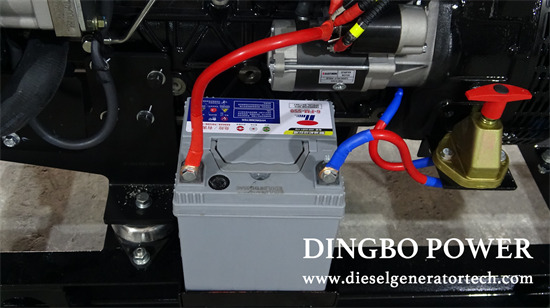Transformer is an important part of diesel generator, and also the part most prone to failure. The transformer tap changer fault is the most common fault of the transformer. The customer service personnel of Dingbo Power, the diesel generator manufacturer, will introduce the causes of the transformer tap changer fault in detail.

1. On load tap changer: For transformers with on load tap changer, the oil tank of the tap changer is generally not connected to the transformer oil tank. If there is a serious shortage of oil in the tap changer oil tank, a short circuit fault will occur during the tap changer switching, causing the tap changer to burn out. Therefore, during operation, the oil levels of the two oil tanks should be monitored separately to ensure that they are normal; The malfunction of the tap changer mechanism includes: due to jamming, the tap changer stopped in the process position, causing the tap changer to burn out; The oil tank of the tap changer is not tightly sealed, resulting in water seepage and oil leakage. After years of not conducting oil inspection and testing, the oil is dirty, and the insulation strength is greatly reduced, leading to faults; The adjustment of the branch switch switching mechanism is not good, causing the contact to burn out, and in severe cases, partial melting, leading to arcing and causing faults.
2. Off load tap changer: Due to prolonged contact with pressure, insufficient spring pressure and uneven roller pressure may occur, resulting in a decrease in the effective contact area of the tap changer's connecting part, as well as silver plating and detachment at the connecting part, causing the tap changer to heat up and damage during operation; Poor contact of the tap changer, poor connection and welding of the outgoing wires, and inability to withstand the impact of short-circuit current, resulting in the tap changer being burned out by short-circuit current and causing malfunction; Due to poor management, the tap changer was mishandled or the work was careless, resulting in tap changer accidents.
Guangxi Dingbo Power Equipment Manufacturing Co.,Ltd was founded in 1974 and is one of the earliest manufacturers of generators and diesel generator sets in China. The company has a registered capital of 218.88 million yuan. The company covers an area of 86,000 square meters and a building area of 55,000 square meters. There are more than 660 employees, including 456 professional technicians and 106 senior technicians. It has 46 sales and service outlets nationwide. The main products are diesel engines, generator sets, and diesel generators, providing users with a one-stop service of design, supply, debugging and maintenance at any time. Dingbo has always insisted on using first-class talents, building first-class enterprises, manufacturing first-class products, creating first-class services, and making every effort to build a first-class domestic enterprise. If any question please feel free to visit our website https://www.dieselgeneratortech.com/ or send email to sales@dieselgeneratortech.com.
Comments
Post a Comment